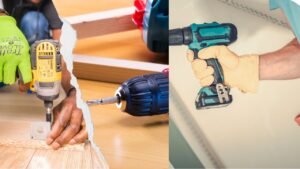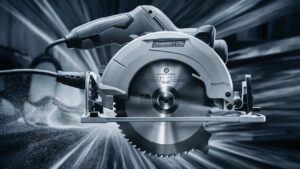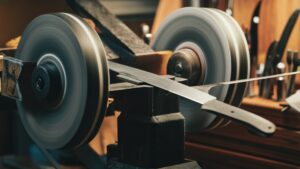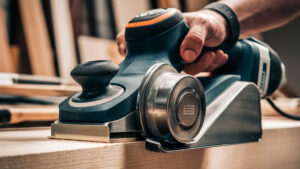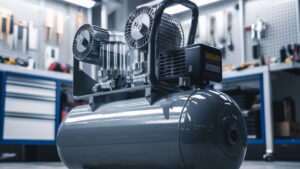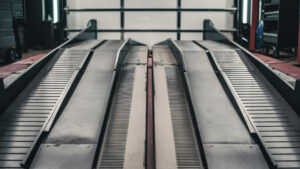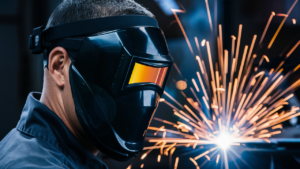To use a laser measuring tool, power it on and aim the laser at the target point. Press the measurement button to capture the distance.
Laser measuring tools have revolutionized how we measure distances accurately and efficiently. They are ideal for both professionals and DIY enthusiasts, offering a quick alternative to traditional tape measures. These devices utilize laser technology to provide precise measurements, even in hard-to-reach areas.
With features like memory storage, continuous measurement, and area calculations, they simplify various tasks. Understanding how to use a laser measuring tool can enhance your productivity and improve accuracy in projects ranging from home renovations to construction work. Embracing this modern tool can save time and reduce measurement errors significantly.
Introduction To Laser Measuring Tools
Laser measuring tools are transforming how we measure distances. They offer accuracy and speed that traditional methods cannot match. These tools use a laser beam to calculate distance, making them ideal for various tasks.
Evolution From Traditional Tape Measures
For many years, people relied on tape measures for distance calculations. Tape measures are simple and portable, but they have limitations:
- They can be difficult to use in tight spaces.
- Accuracy decreases with longer lengths.
- Reading measurements can be tricky without help.
Laser measuring tools have emerged as a reliable alternative. They have several advantages:
| Feature | Tape Measure | Laser Measuring Tool |
|---|---|---|
| Accuracy | Moderate | High |
| Ease of Use | Requires two people for long distances | Single-person operation |
| Distance Range | Limited | Long range |
Popular Uses In Various Industries
Laser measuring tools are widely used across different fields:
- Construction: Measure distances quickly and accurately.
- Interior Design: Plan room layouts with precision.
- Real Estate: Provide accurate property measurements.
- Manufacturing: Ensure product dimensions meet standards.
Each industry benefits from the efficiency and accuracy of laser measuring tools. They save time and reduce errors, making tasks easier.
Key Features Of Laser Measuring Devices
Laser measuring devices offer several essential features. These features enhance accuracy and ease of use. Understanding these aspects helps in choosing the right tool.
Accuracy And Precision
Accuracy is crucial in laser measuring devices. These tools provide precise measurements consistently. Most devices have an accuracy range of ±1/16 inch.
- High accuracy ensures reliable results.
- Precision is vital for professional applications.
- Laser beams minimize errors from human measurement.
Range And Measurement Units
Laser measuring devices have impressive range capabilities. Most can measure distances from a few inches to several hundred feet.
| Model | Range | Measurement Units |
|---|---|---|
| Model A | 0.05 to 165 ft | Feet, Meters |
| Model B | 0.1 to 330 ft | Feet, Meters |
Users can switch between measurement units. This flexibility suits different projects and preferences.
Additional Functionalities
Many laser measuring devices come with extra features. These features can enhance your measuring experience.
- Area Calculation: Calculate square footage easily.
- Volume Calculation: Measure three-dimensional spaces quickly.
- Memory Functions: Store previous measurements for reference.
Some devices connect to smartphones or tablets. This connection allows for easy data sharing and documentation.
Choosing The Right Laser Measuring Tool
Finding the perfect laser measuring tool can enhance your measuring tasks. With various options available, it’s vital to select a tool that meets your needs. Consider key factors to make an informed choice.
Factors To Consider
- Measurement Range: Check how far the tool can measure.
- Accuracy: Look for tools that offer high precision.
- Features: Some tools include built-in calculators or Bluetooth.
- Ease of Use: Select a model with a simple interface.
- Durability: Choose a tool that withstands tough conditions.
- Battery Life: Longer battery life means less downtime.
Comparing Top Brands And Models
| Brand | Model | Range (ft) | Accuracy (in) | Special Features |
|---|---|---|---|---|
| Bosch | GLM 50C | 165 | 1/16 | Bluetooth, Color Display |
| Leica | DISTO D2 | 330 | 1/16 | Area and Volume Calculation |
| DeWalt | DWM120K | 100 | 1/8 | Multiple Measurement Modes |
Compare brands to find the best fit for your projects. Each brand offers unique features to cater to different needs. Understand the specifications before making your choice.
Setting Up Your Laser Measure
Setting up your laser measure correctly is crucial for accurate measurements. Follow these simple steps to ensure your device performs at its best. Proper setup saves time and minimizes errors.
Initial Configuration
Before using your laser measuring tool, complete these initial steps:
- Remove the device from the packaging.
- Insert batteries as per the manufacturer’s instructions.
- Turn on the laser measure by pressing the power button.
- Select the desired measurement mode (e.g., distance, area).
- Set the unit of measurement (meters, feet, or inches).
Check the display settings. Ensure it is bright enough for visibility. Some laser measures allow you to adjust the contrast.
Calibration For Optimal Performance
Calibration ensures accuracy in measurements. Follow these steps:
- Find a flat surface free from obstructions.
- Point the laser measure at a known reference point.
- Take multiple measurements from the same spot.
- Compare the readings with actual measurements.
Adjust your laser measure if needed. Here’s how to calibrate:
| Step | Action |
|---|---|
| 1 | Access the calibration menu in settings. |
| 2 | Follow on-screen prompts to adjust the settings. |
| 3 | Save changes and exit the menu. |
Recheck measurements after calibration. This ensures consistent accuracy. Regular calibration keeps your device reliable and trustworthy.
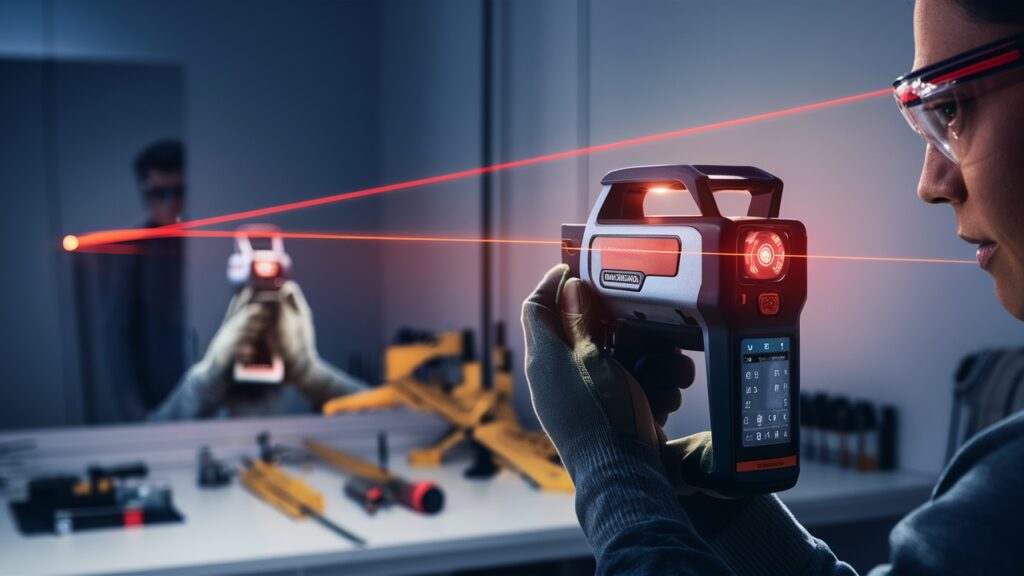
Basic Techniques For Accurate Measurement
Using a laser measuring tool can greatly enhance your measuring accuracy. Understanding basic techniques is essential. These techniques help you avoid errors and save time.
Single-distance Measurement
Single-distance measurement is straightforward and effective. Follow these steps:
- Place the tool against a wall or object.
- Point the laser at your desired target.
- Press the measure button.
- Read the measurement on the display.
Ensure the tool is level. This prevents errors. Always aim for a clear target. A bright spot makes it easier to see the laser.
Continuous Measurement Mode
Continuous measurement mode is useful for tracking changes. Here’s how to use it:
- Activate the continuous mode on your device.
- Point the laser at a starting point.
- Move the tool to your next point.
- The display shows the distance as you move.
This mode is ideal for measuring large areas. It helps you avoid multiple measurements. Keep the tool steady for better results.
| Technique | Best For |
|---|---|
| Single-Distance Measurement | Quick, one-time measurements |
| Continuous Measurement Mode | Tracking distances over time |
Master these basic techniques. They make measuring easier and more precise.
Advanced Measuring Techniques
Using a laser measuring tool opens up advanced measuring techniques.
These methods can improve accuracy and efficiency. They are useful for both professionals and DIY enthusiasts.
Area And Volume Calculations
Calculating area and volume with a laser tool is simple.
Follow these steps:
- Measure the length of the area.
- Measure the width of the area.
- Use the formula:
- Area = Length × Width
- For volume, measure the height.
- Use the formula:
- Volume = Length × Width × Height
Example:
| Measurement | Value (m) |
|---|---|
| Length | 5 |
| Width | 3 |
| Height | 2 |
| Area | 15 |
| Volume | 30 |
Indirect Measurement Using Pythagoras
Pythagoras’ theorem helps measure distances indirectly.
This technique is great for hard-to-reach places.
Follow these steps:
- Measure two sides of a right triangle.
- Use the formula:
- C² = A² + B²
- Calculate the hypotenuse (C).
Example:
| Side | Value (m) |
|---|---|
| A | 4 |
| B | 3 |
| C (Hypotenuse) | 5 |
This technique ensures accurate measurements. Use it to measure height, width, or depth.
Tips And Tricks For Professional Use
Mastering a laser measuring tool can elevate your projects. Here are some essential tips for professional use.
Dealing With Obstacles And Reflective Surfaces
Obstacles can disrupt accurate measurements. Reflective surfaces can cause errors. Follow these strategies:
- Use a target plate. This helps the laser reflect correctly.
- Position the tool at different angles. This might improve accuracy.
- Avoid shooting directly at mirrors or shiny walls.
Always check your measurements twice. This ensures precision.
Outdoor Use And Lighting Conditions
Outdoor measurements pose unique challenges. Bright sunlight can make readings hard to see.
- Use a laser tool with a high visibility mode.
- Choose a target that contrasts with the background.
- Use a shade or cover to block sunlight.
Timing matters. Early morning or late afternoon offers the best light.
Consider using a laser detector for long distances. It enhances accuracy.
Maintenance And Troubleshooting
Proper maintenance keeps your laser measuring tool in top shape. Regular care extends its lifespan. Troubleshooting helps solve issues quickly. Follow these tips for effective maintenance.
Cleaning And Storage
Clean your laser measuring tool regularly to maintain accuracy. Dust and dirt can affect readings.
- Use a soft, dry cloth to wipe the exterior.
- For the lens, use a lens cleaning solution.
- Avoid using harsh chemicals or abrasive materials.
Store the tool in a cool, dry place. Use the original case to protect it. Keep it away from moisture and extreme temperatures.
Common Issues And How To Solve Them
Here are some common problems with laser measuring tools:
| Issue | Solution |
|---|---|
| Device won’t turn on | Check the batteries. Replace if needed. |
| Inaccurate measurements | Ensure the lens is clean. Calibrate if necessary. |
| Laser not visible | Check the battery. Replace if low. |
| Display malfunctioning | Reset the device. Refer to the manual for details. |
Contact customer support for persistent issues. Ensure you have warranty details handy.
Integrating Laser Measurements With Technology
Integrating laser measurements with technology enhances accuracy and efficiency. Smart tools now connect seamlessly with apps. This makes data collection easier and faster.
Using Bluetooth And Apps
Bluetooth technology allows laser measuring tools to connect with smartphones and tablets. This integration offers several benefits:
- Real-time data transfer: Instant measurement updates.
- User-friendly interfaces: Simplified controls on apps.
- Custom settings: Personalize your measurement preferences.
Popular apps for laser measuring tools include:
- Laser Measure Pro
- Measure by Google
- Smart Measure
These apps often feature:
- Distance calculations
- Area and volume measurements
- Photo tagging for easy reference
Exporting Data For Further Analysis
Exporting data from laser measuring tools allows deeper analysis. Users can transfer measurements to spreadsheets or design software. This feature helps in various tasks:
| Task | Benefit |
|---|---|
| Project Planning | Accurate dimensions for better layouts. |
| Cost Estimation | Calculate materials needed easily. |
| Documentation | Maintain records of measurements for future reference. |
Export options often include:
- CSV files
- PDF reports
- Direct integration with CAD software
This integration saves time and reduces errors. Accurate data leads to successful projects.
Safety Precautions And Best Practices
Using a laser measuring tool requires attention to safety. Proper precautions help prevent accidents. Follow these guidelines for a safe measuring experience.
Laser Safety Standards
Laser measuring tools emit focused light beams. These beams can be harmful if misused. Familiarize yourself with the following safety standards:
- Class 2 Lasers: Safe for brief exposure.
- Class 3R Lasers: Caution required; avoid direct eye exposure.
- Class 3B and 4 Lasers: High risk; only trained users should operate.
Responsible Use Guidelines
Follow these best practices for safe operation:
- Always wear safety glasses if needed.
- Keep the laser away from eyes.
- Avoid aiming the laser at people or pets.
- Use the tool in a well-lit area.
- Store the tool safely when not in use.
- Regularly check the tool for damage.
Remember to read the user manual. Each tool has specific instructions. Follow them to ensure safety and accuracy.
| Laser Class | Eye Safety | Usage Guidelines |
|---|---|---|
| Class 2 | Safe for short exposure | Avoid prolonged gaze |
| Class 3R | Use caution | No direct eye exposure |
| Class 3B | High risk | Trained users only |
| Class 4 | Severe risk | Professional handling required |
Conclusion: Enhancing Your Measuring Expertise
Mastering the use of a laser measuring tool can greatly improve your measuring skills. Understanding its features and applications leads to accurate results. Explore the sections below to solidify your knowledge and continue your journey in measuring expertise.
Recap Of Key Takeaways
- Familiarize yourself with the tool’s functions.
- Practice regularly to build confidence.
- Utilize the tool for various projects.
- Ensure battery levels are adequate before use.
- Read the manual to understand all features.
Continued Learning And Skill Development
Measuring skills improve with practice and knowledge. Consider these methods to enhance your expertise:
- Join workshops on laser measuring tools.
- Watch tutorial videos for practical demonstrations.
- Engage with online communities to share tips.
- Read books on measurement techniques.
Regular practice will help you become proficient. Use your laser measuring tool in various settings. The more you measure, the better you will become.
Frequently Asked Questions
How Does A Laser Measuring Tool Work?
A laser measuring tool uses a laser beam to calculate distances accurately. When the laser beam hits a surface, it reflects back to the tool. The device measures the time taken for the beam to return. This information is then processed to display the distance on the screen.
What Are The Benefits Of Using A Laser Measuring Tool?
Using a laser measuring tool offers several advantages. It provides precise measurements, saving time and reducing errors. It is also lightweight and portable, making it easy to use on different job sites. Additionally, many models have features like memory storage and Bluetooth connectivity for added convenience.
Can I Use A Laser Measuring Tool Outdoors?
Yes, you can use a laser measuring tool outdoors. However, visibility can be affected by bright sunlight. Look for models with enhanced visibility features. Some tools also come with a receiver for better outdoor performance. Always ensure the tool is rated for outdoor use for optimal accuracy.
How Do I Maintain My Laser Measuring Tool?
To maintain your laser measuring tool, keep it clean and stored properly. Wipe the lens with a soft cloth to avoid scratches. Regularly check the battery and replace it when necessary. Avoid exposing the tool to extreme temperatures or moisture for longer lifespan and performance.
Conclusion
Using a laser measuring tool can significantly enhance your accuracy and efficiency. With practice, you’ll find it simplifies tasks like measuring distances and areas. Embracing this technology not only saves time but also reduces errors. Start incorporating it into your projects, and experience the difference it makes in your workflow.
